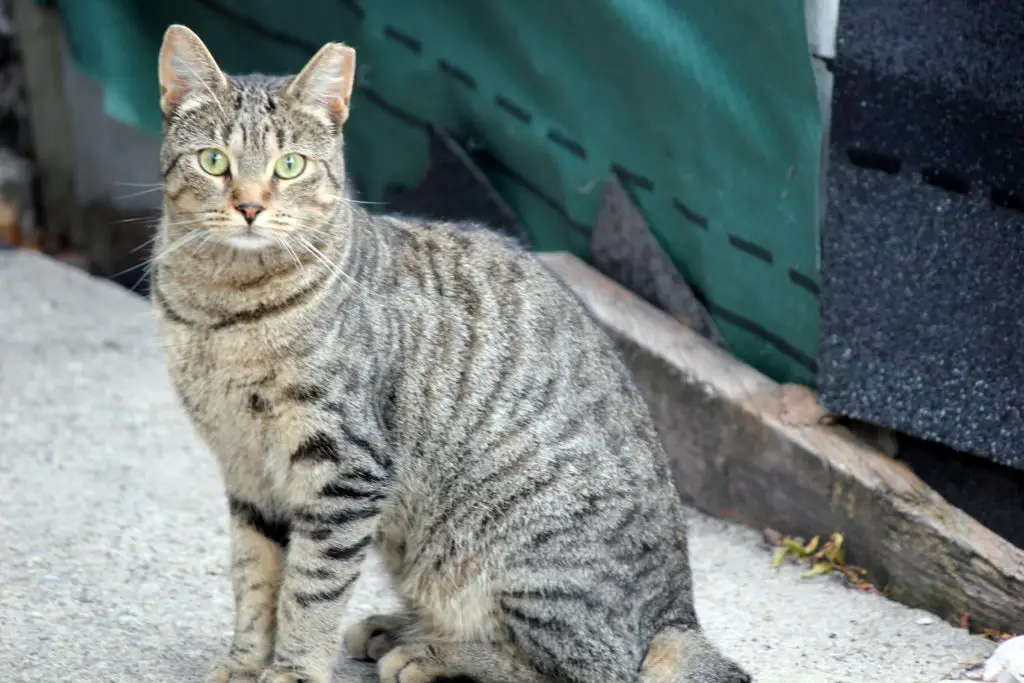Because feral cats are inherently avoidant of humans, you need to be mindful of how you go about getting a feral cat into a carrier. There are different tactics to go about this, and you should weigh which would work best for your scenario.
The rest of this article will go over the correct type of carrier to use and how to get and keep the cat safely inside. Continue reading to learn more about transferring a feral cat safely.
Why Would You Need To Put a Feral Cat in a Carrier?
Perhaps the most obvious reason to capture a feral cat is to take part in the trap-neuter-return program. This program involves capturing a cat, a vet fixes them, and then they are returned to where they were caught from.
By neutering them, they no longer reproduce, and it lessens aggression between male feral cats. If the cat has a notched ear, it is likely already fixed and does not need to take part in the program.
Alternately, feral cats may be caught for veterinary care. These cats face all kinds of hardships outside, from other cats to cars, to unkind people. More severe wounds require veterinary care.
Likewise, some diseases and injuries are so severe that it is imperative to get them to the veterinarian in order to put them to humanely euthanize them.
What Type of Carrier is Best For a Feral Cat?
The best type of carrier is a hard-sided carrier with a locking door. These can be easily found in many stores. The door can be left open while you entice the feral cat inside.
This type of kennel is easy to assemble, but also quite sturdy, so long as you follow the weight recommendations. As you are trying to capture feral cats, it is important to go with the bigger carrier.
The larger size will make them feel safer and more likely to walk inside their own volition.
If you cannot catch the cat by the methods below, you can look into a humane trap for small animals. Oftentimes, these are available from your city’s animal care and control, or can be bought online.
How to Put a Feral Cat in a Carrier Safely
There are many ways to get a feral cat into a carrier. Some ways require more patience, and a lot of the success of these tactics comes down to the individual cat.
1. Familiarity is Key
Observe where the cat likes to lay and spend time, and consider placing the carrier there.
Alternately, if they have a favorite blanket or bed to lay on, you could put this inside the carrier. Their scent may make them more likely to enter the kennel of their own volition.
In general, gaining the cat’s trust can be a good starting point. Try leaving some food for them near your house, so they learn overtime that this is the safe place to be in.
This way, they will be more likely to do anything you want of them.
2. Leave the Carrier Outside
Cats have an excellent sense of smell, so anything that smells unfamiliar will make them feel uncomfortable.
Once you buy the carrier, leave it in your yard for a few days, so the cat can get used to its presence and get familiarized with its smell.
3. Cover the Carrier
The next thing you can do to make a carrier less of an unfamiliar object is to cover it with a blanket, or any other cover type.
This will make the cat curious about what it is, and it might want to go inside more easily.
4. Food Trails/Bait
This may be the best way to get the feral cat into the carrier. Use smelly food, such as canned food or sardines.
Placing this in the back of the carrier, you may only have to wait for them to begin eating before you close and securely latch the door.
You can try leading them to the carrier, by placing food in a trail leading up to it. With luck, they will simply follow the trail inside.
If the two above food bribes are not working, you can try the almighty catnip. This small plant is irresistible to many cats. Placing a bit inside may quickly catch your feral kitty.
Related Post: How To Safely Sedate A Feral Cat At Home?(Natural Ways)
5. Use a Laser Pointer
We all know how much cats love those. If your feral cat loves playing with the laser pointer, let’s use that to our advantage.
Simply point it in the direction of the carrier (make sure there is a tasty treat already in place for the cat), and just wait for your cat to jump in.
6. Use Cardboard
Just like laser pointers, anything that has to do with the cardboard works like a magnet for the cats, regardless of whether they are feral or not.
If your cat carrier is big enough, you can even place a cardboard box in it. If not, simply cover the floor of the carrier with a piece of cardboard. Your cat is going to really like it.
7. Use a Wire Kennel
If you happened to have a larger wire kennel for your dog, that might come in handy.
Place the cat carrier inside the wire kennel, wait for the cat to go inside the smaller carrier using one of the methods mentioned here, and simply lock it up there by shutting the door of the wire kennel.
If the cat shows the signs of aggression, you can use a broomstick to lock the cat’s carrier.
8. Manhandle the Feral Cat
Another quicker approach is using a blanket to capture the feral cat and physically placing it into the carrier. Ensure that you wrap the cat completely so that he cannot fight his way out as you put him in the cage.
If you attempt this, gloves may be a good idea. The cat will not be pleased, and you run a real risk of being scratched or bitten by a true feral cat.
If timeliness is necessary, this approach may prove the best option.
How to Transfer a Feral Cat in the Carrier
A truly feral cat will not like being in a carrier, so there are certain steps you can take to eliminate risks.
Ensure the Receiver Knows
Before capturing and moving your feral cat, ensure that the rescue or vet knows that you are bringing in a feral or semi-feral cat. They may have certain protocols that they want you to follow.
You will want to seek out a vet or rescue that is familiar with feral cats and know what to expect.
Some vets won’t accept your cat in a cat carrier, especially if it is completely feral. You will need to use a cat trap instead. So, please do make sure to call and ask the vet.
Otherwise, all your efforts of placing the cat in a cat carrier will be in vain.
Worse case scenario, you can always transfer the cat from the carrier to the cage trap by placing them directly next to each other, and wait for the cat to walk into the cage trap. Just make sure to keep an eye on the cat, so it doesn’t escape.
In addition, you don’t want to stress the feral cat out by capturing him or her, then having the vet being unable to perform the procedure or do an appointment.
Calm the Feral Cat
Place a blanket over the crate during transport, which may calm the cat down some. Do not leave the cat in a carrier in a location where they can overheat.
Protect your Vehicle
Trapped feral cats may very well urinate or defecate during transport. In order to protect your vehicle, either line the area for the carrier with plastic, puppy pads, or several layers of newspaper.
How Long Can a Feral Cat Stay in a Carrier?
A regular, hard-sided kennel should only be used as long as is necessary, usually no longer than for 2 hours. Place them in here before taking them to the vet or to the shelter if need be.
These crates are typically not big enough to have a litter box or allow the cat ample room to move around. Feral cats should not stay in carriers for a prolonged period of time.
Typically, if a cat requires longer-term care, you would place the carrier inside a larger wire kennel. Then the carrier becomes the bed or safe place, and you can place food and water dishes, as well as a litter box, in the kennel itself.
Related Post: How To Take A Feral Cat To The Vet?(Practical Tips)
Final Thoughts
You now have a better understanding of the proper way to use a carrier with a feral cat. Placing them in a carrier is a temporary fix for whatever problem you are having with your feral cat.
Consider the above safety precautions before attempting to capture your feral cat.

My name is Katie, and I have had different pets at home for as long as I can remember. While I can definitely say I love all animals in general, my heart belongs to cats and dogs. I know you are supposed to choose one or the other, but I could never really decide. I’ve also owned hamsters and fish when I was a kid, and they filled my childhood with very delightful memories.





